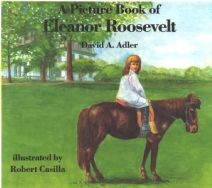As COVID-19 deaths spiked in 2020, Suzanne Firstenberg’s public art installation "In America: How could this happen…"
History Explorer Results (74)
Related Books (19)

Grade Range:
K-12
Resource Type(s):
Artifacts, Primary Sources
Date Posted:
12/31/2010
Cher Ami was a registered Black Check cock carrier pigeon, one of 600 birds owned and flown by the U.S. Army Signal Corps in France during World War I. He delivered twelve important messages within the American sector at Verdun; on his last mission, October 4, 1918, he was shot through the breast

Grade Range:
5-12
Resource Type(s):
Artifacts, Primary Sources
Date Posted:
12/30/2010
Union belt buckle found on the battlefield at Winchester, Virginia.

Grade Range:
5-12
Resource Type(s):
Artifacts, Primary Sources
Date Posted:
12/28/2010
Confederate cavalry leader John Mosby is among the most romantic characters in the Civil War. From 1863 to the end of the conflict, Mosby's raiders were a constant headache for the North. The raiders usually acted in small detachments of several dozen, sacking supply depots, attacking railroads,

Grade Range:
5-12
Resource Type(s):
Artifacts, Primary Sources
Date Posted:
12/28/2010
Cap worn by Landsman Nathan Ives of the USS Kearsarge.
The CSS Alabama was a 1,050-ton screw steam sloop of war. Built in Liverpool, England, it took to sea as a merchant ship, but on August 24, 1862, it rendezvoused with a supply ship and was outfitted for war. For th

Grade Range:
5-12
Resource Type(s):
Artifacts, Primary Sources
Date Posted:
12/28/2010
General Robert E. Lee’s first invasion of the North culminated in the Battle of Antietam, the bloodiest single-day battle in American history. On September 17, 1862, General Robert E. Lee and 30,000 Confederate troops faced Major General George McClellan and 60,000 Union troops.

Grade Range:
5-12
Resource Type(s):
Artifacts, Primary Sources
Date Posted:
12/28/2010
General Philip H. Sheridan loved music and took a personal interest in his bands. Performing under fire was commonplace for bands under his command. They performed at the front during battle playing the liveliest airs in their repertory.

Grade Range:
5-12
Resource Type(s):
Artifacts, Primary Sources
Date Posted:
12/23/2010
The kepi is similar to the forage cap. It was copied from the French officer's hat. The crown could be colored, usually for the branch of service of the wearer. The kepi was shorter than the forage cap, and was not very popular because it did not protect from the rain or sun.

Grade Range:
5-12
Resource Type(s):
Artifacts, Primary Sources
Date Posted:
12/23/2010
The forage cap was introduced just in time to become the signature headgear of the Civil War soldier. This model was the most popular worn by the Union army, officers and enlisted men alike.

Grade Range:
5-12
Resource Type(s):
Artifacts, Primary Sources
Date Posted:
12/23/2010
During the Civil War, officers wore many types of hats, more often non-regulation than regulation. This example of a regulation army hat was worn by General William T. Sherman. Although a native of Ohio, William Tecumseh Sherman remains inextricably linked with Georgia and the burning of At

Grade Range:
5-12
Resource Type(s):
Artifacts, Primary Sources
Date Posted:
12/23/2010
US Army private's uniform from approximately 1840.



















